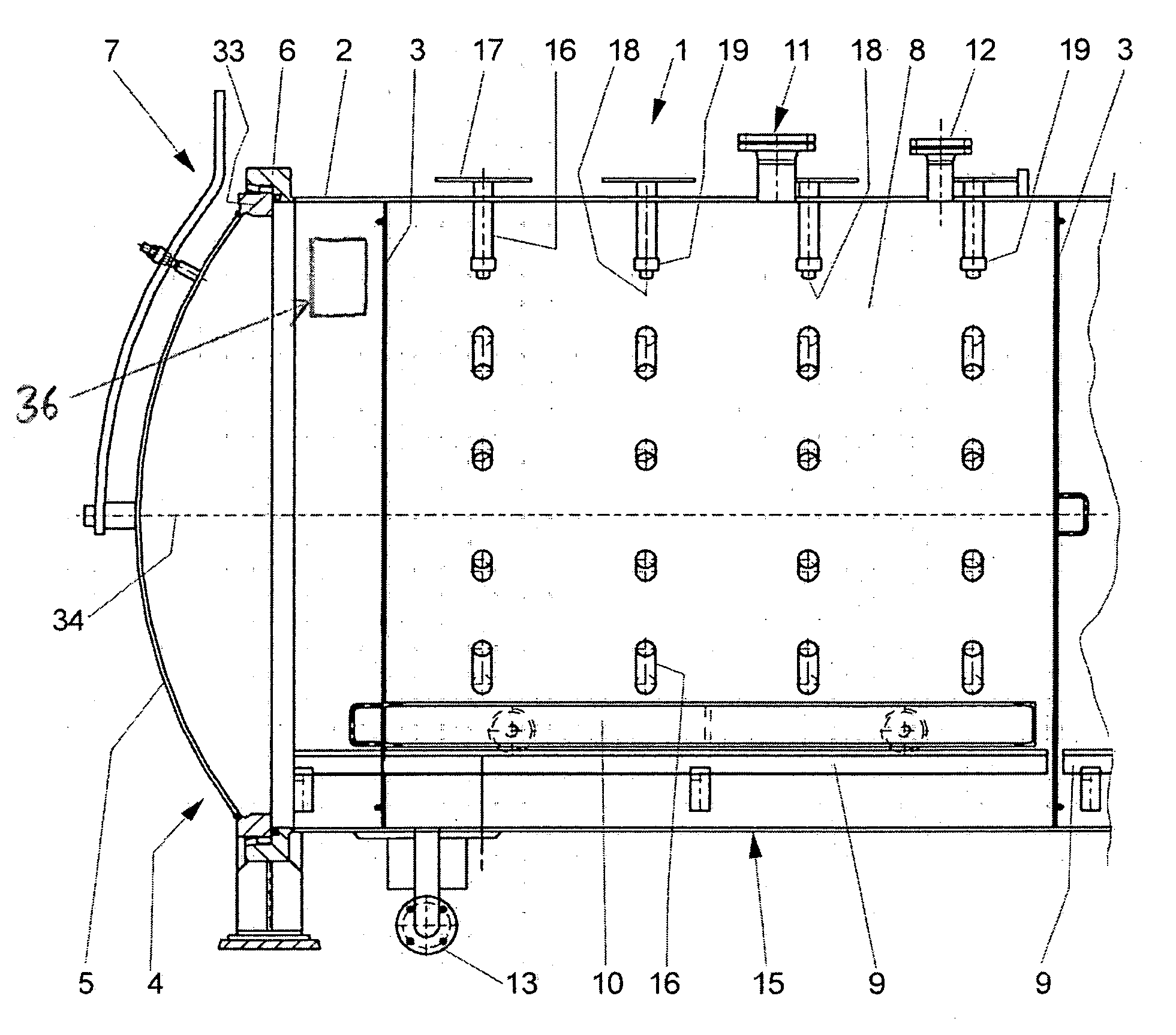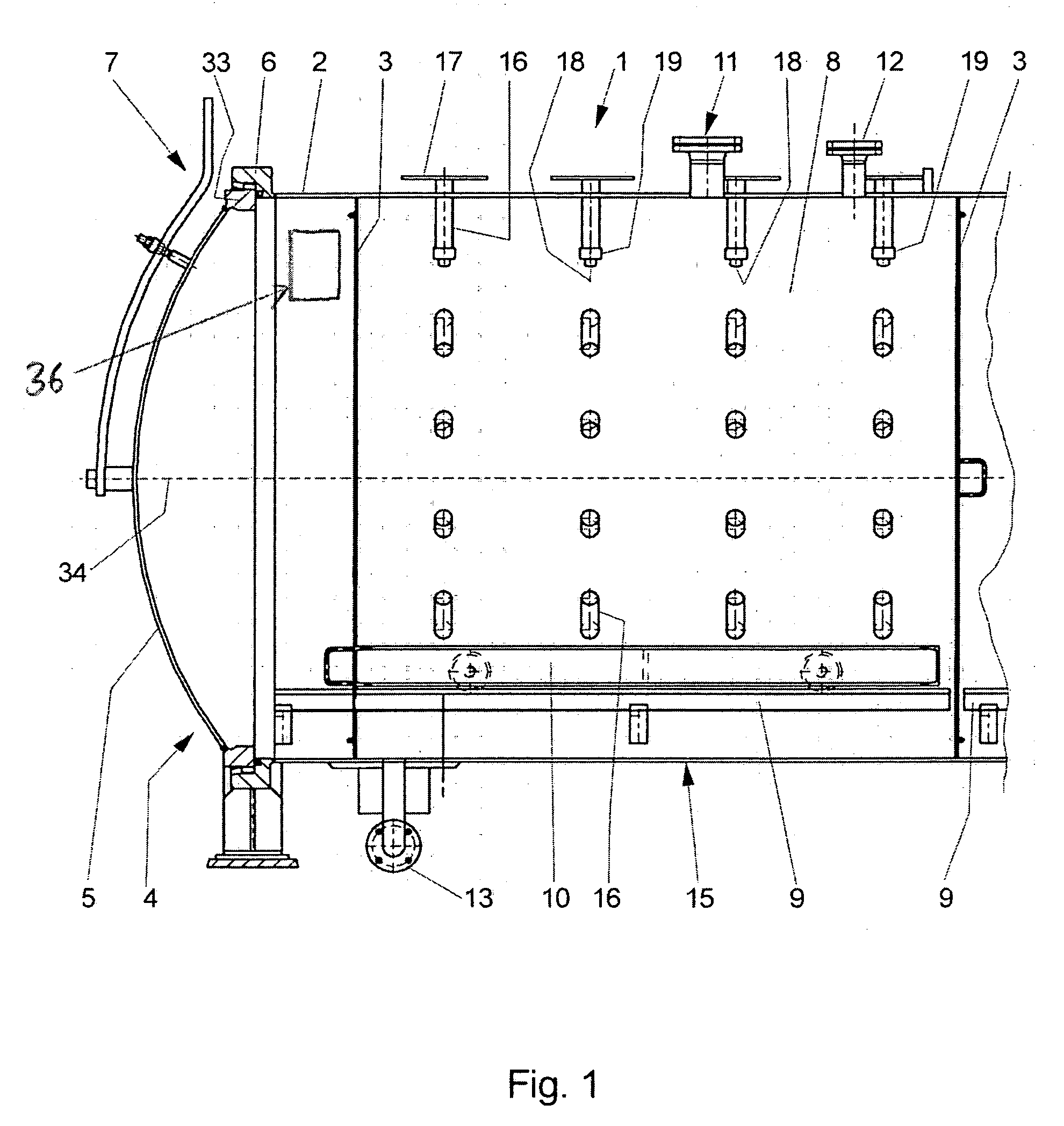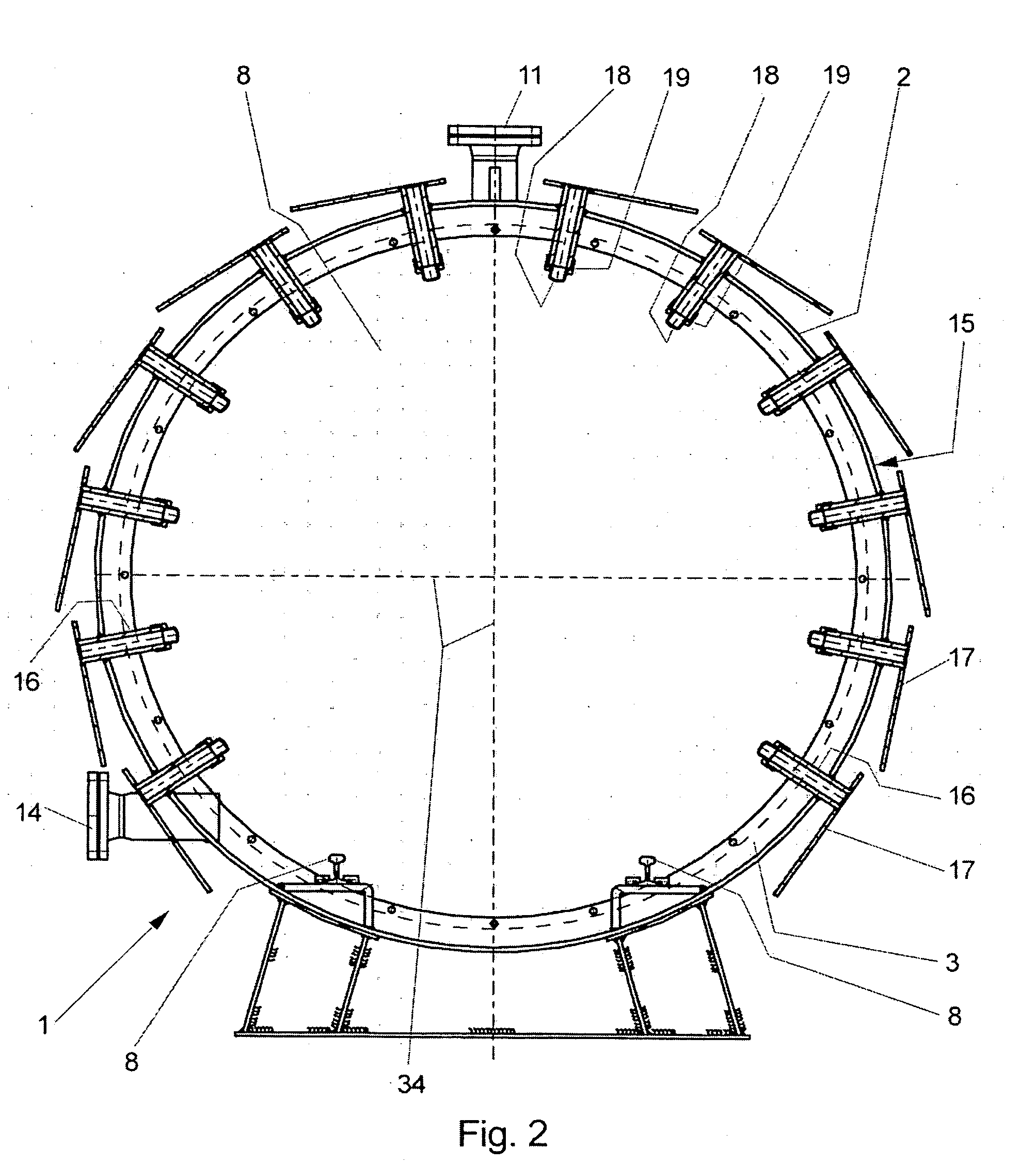Microwave autoclave
a micro-wave and autoclave technology, applied in the field of autoclaves, can solve the problems of low general efficiency of heat transfer onto the surface via convection, inability to provide suitable wave-optical mirrors, and inability to uniformly heat up objects' surfaces
- Summary
- Abstract
- Description
- Claims
- Application Information
AI Technical Summary
Benefits of technology
Problems solved by technology
Method used
Image
Examples
Embodiment Construction
[0018] In the new autoclave the heat source for heating the objects arranged in the pressure chamber has a plurality of microwave sources. Because of this, the new autoclave is also designated as a microwave autoclave here. The new microwave autoclave combines the thermal treatment of objects using microwave radiation for heating the objects with a simultaneous pressure treatment of the objects. The microwave radiation irradiated by the microwave sources is coupled into the pressure chamber to act upon, i.e. to heat up the objects arranged in the pressure chamber.
[0019] In the new microwave autoclave at least four microwave source per square meter surface area of the pressure resistant wall are provided to achieve a homogeneous temperature distribution over the objects arranged in the pressure chamber. This figure is based on an industrial scale autoclave having an outer diameter of at least about 2 m and a free inner diameter of the pressure chamber of at least about 1.5 m as well...
PUM
| Property | Measurement | Unit |
|---|---|---|
| inner diameter | aaaaa | aaaaa |
| frequency | aaaaa | aaaaa |
| frequencies | aaaaa | aaaaa |
Abstract
Description
Claims
Application Information
 Login to View More
Login to View More - R&D
- Intellectual Property
- Life Sciences
- Materials
- Tech Scout
- Unparalleled Data Quality
- Higher Quality Content
- 60% Fewer Hallucinations
Browse by: Latest US Patents, China's latest patents, Technical Efficacy Thesaurus, Application Domain, Technology Topic, Popular Technical Reports.
© 2025 PatSnap. All rights reserved.Legal|Privacy policy|Modern Slavery Act Transparency Statement|Sitemap|About US| Contact US: help@patsnap.com



